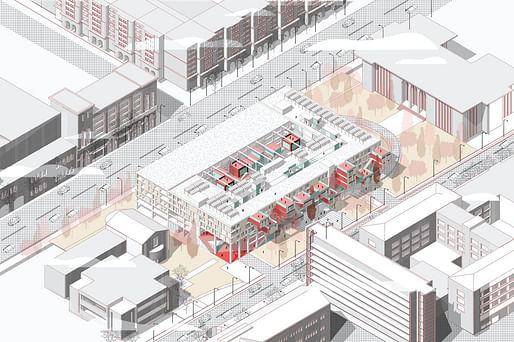

The National Council of Architectural Registration Boards (NCARB) has published new data giving insights into the growth of architectural education throughout the 2019/2020 academic year. As part of their tenth annual NCARB by the Numbers report, NCARB examined the number of individuals beginning, continuing, and graduating from architectural education throughout the academic year as well as information on demographics.
Overall, the number of new and total enrollments in NAAB-accredited programs continued to rise for the 2019/2020 academic year, as did the number of graduates. 7,968 new students enrolled in an NAAB program in the 2019/2020 cycle, representing a 3% increase on the previous year, and a third consecutive year of steady growth. Of those, 51% enrolled in a Bachelor of Architecture, 48% enrolled in a Master of Architecture, and less than 1% enrolled in a Doctor of Architecture. Just over half of new students (51%) were women.

In total, there were 26,977 students enrolled in NAAB programs throughout the year, which is a 4% increase on the 2018/2019 cycle, and the third consecutive year of growth. 60% of students were undertaking a Bachelor of Architecture, while 39% were enrolled in a Master of Architecture, and less than 1% were in a Doctor of Architecture program. There is a 50-50 split between men and women in the programs.
In 2020, 6,079 degrees were awarded from NAAB-accredited programs, which is 2% higher than the 2019 figure but slightly lower than the average number seen over the past decades, at 6,145. There was a 50-50 split between men and women graduating, showing a closer parity than last year’s split of 53% men and 47% women.

Of those who completed the NCARB path to licensure in 2020, 53% started their NCARB record while in school, which is a 3% increase on 2019 and more than double than a decade ago. This data suggests that more people are overlapping their education and professional experience, which may lead to a reduction in the overall time taken to complete licensing requirements in the future.
Meanwhile, 28 NAAB-accredited programs at 23 colleges participated in NCARB’s Integrated Path to Architectural Licensure (IPAL) initiative last year. IPAL was launched in 2015 in an attempt to shorten the time needed to complete the path to licensure in the United States, through education programs that connect with real-world practice. Throughout the 2019/2020 cycle, there were 650 students enrolled in IPAL programs. The University of Southern California (USC) saw the highest number of participants at 147, followed by the Savannah College of Art & Design with 103 participants, and the Boston Architectural College with 86 participants.
The numbers are the latest in a series of studies of NCARB data over recent months. Last week, we covered NCARB’s data showing that the total number of U.S. architects is continuing to grow despite COVID-19 disruption. In July, we reported NCARB’s findings that female candidates and candidates of color are less likely to pass the ARE, sparking a series of reforms and initiatives to improve access to licensing. In June, meanwhile, NCARB noted that the COVID-19 pandemic led to a 40% drop in newly licensed architects, with the delivery of AREs dropping by 44%.
No Comments
Block this user
Are you sure you want to block this user and hide all related comments throughout the site?
Archinect
This is your first comment on Archinect. Your comment will be visible once approved.